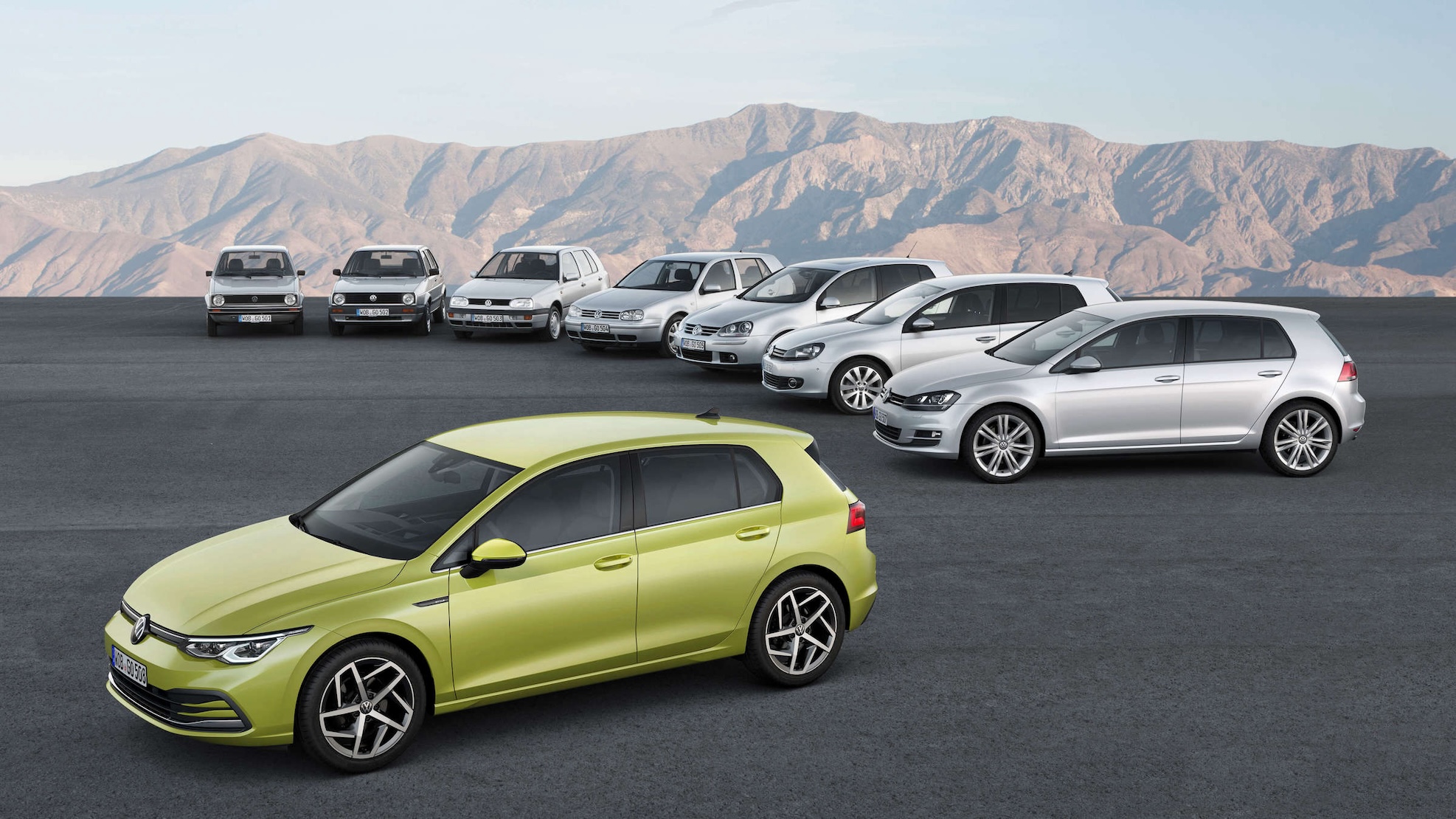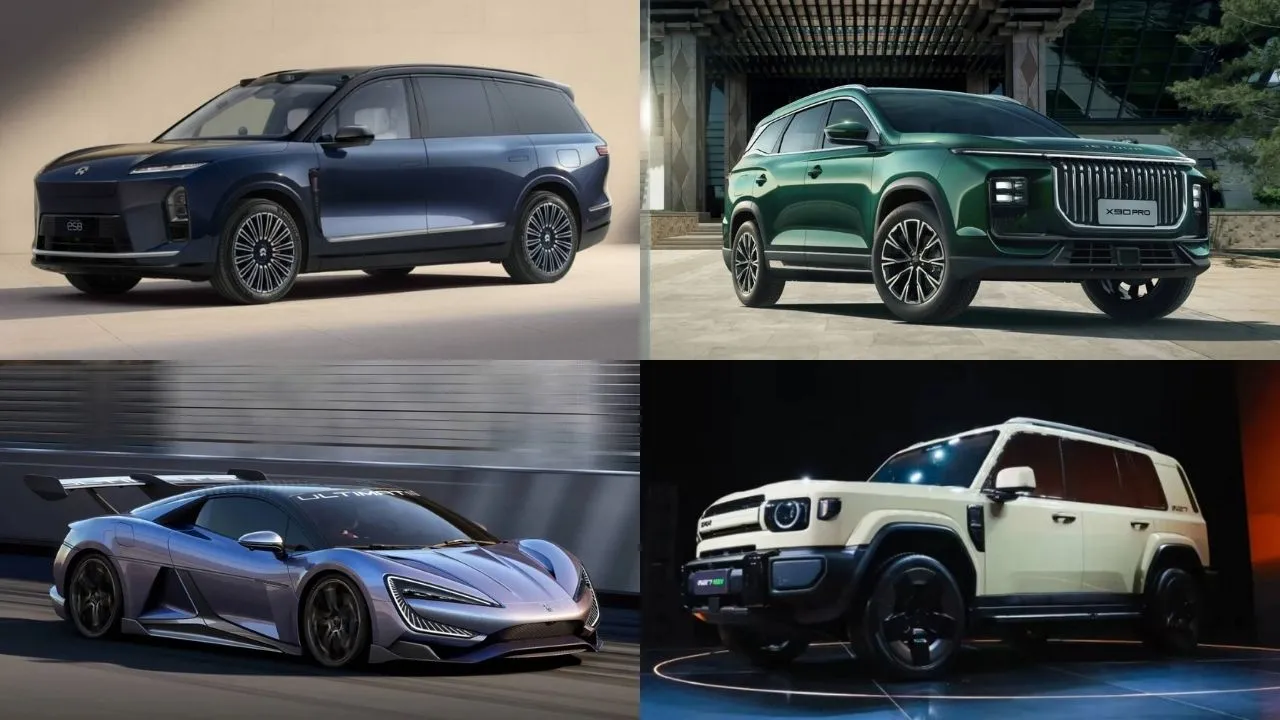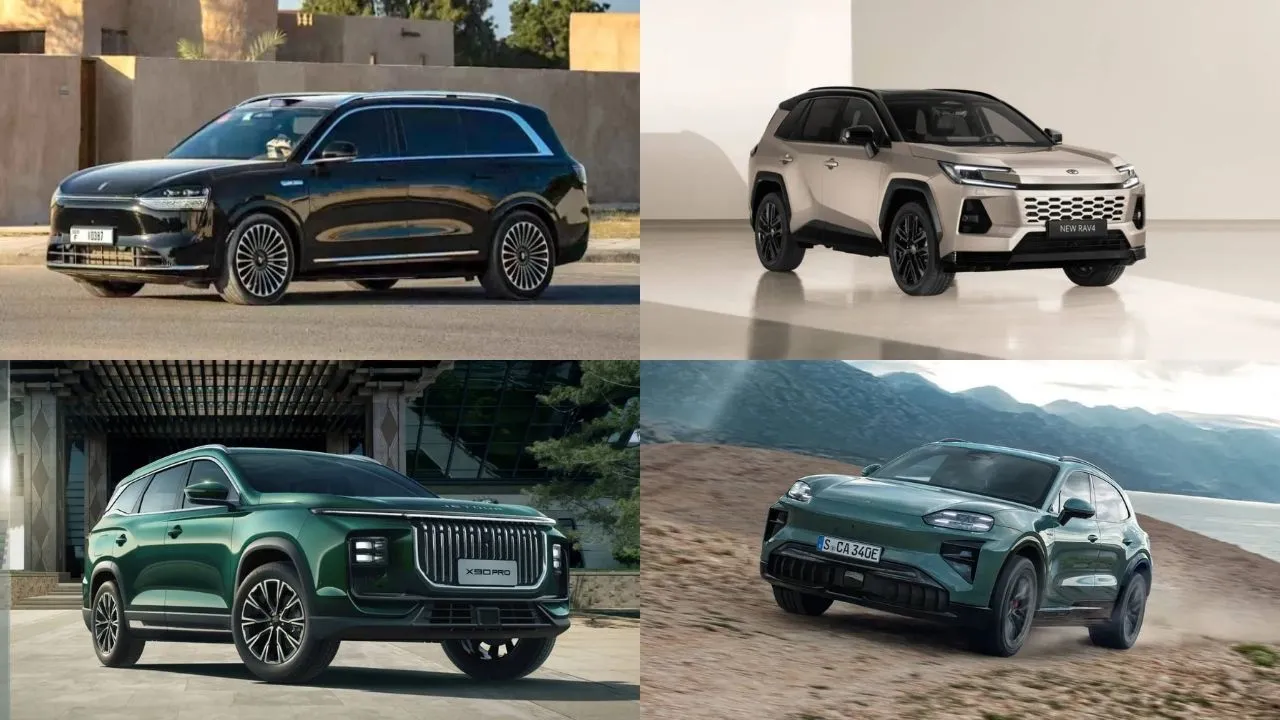Volkswagen Golf — History, Generations & Models

The Volkswagen Golf, an automotive icon, Is one of the most popular cars ever produced. It first debuted in 1974 and eight generations of the VW Golf have been sold since then. It became the best-selling Volkswagen car of all time and is among the top 3 bestselling cars ever made. Here’s all you need to know about the Volkswagen Golf, its history, generations & models.

Over the years, the Golf has not only become synonymous with reliability and practicality but has also showcased Volkswagen‘s commitment to innovation and design. This article takes a journey through the rich history of the Volkswagen Golf, exploring each generation’s unique features, and the impact they’ve had on the automotive landscape.
Origins Of The Volkswagen Golf
1938 saw the arrival of the Volkswagen Beetle, which went into series production a few years later in 1945. Over the years and decades, it turned into an automotive icon. Read our Volkswagen Beetle Car Spotlight article to know more about the bug.

By the late 60s, it was quite obvious that the Volkswagen Beetle needed to be replaced by a more modern, contemporary, and most importantly front-wheel-drive hatchback. This is when the development of the Volkswagen Golf began.
First Generation — Mk1 | 1974 – 2009
The birth of the Volkswagen Golf marked a new era for compact cars. Introduced in 1974, the Mk1 Golf was a departure from traditional boxy designs, featuring a sleek and angular hatchback body. Designed by the legendary Giorgetto Giugiaro, the Mk1 Golf was an instant success, earning praise for its practicality, fuel efficiency, and driving dynamics.

Under the bonnet, the Mk1 Golf offered a range of engines, catering to different driving preferences. From the economical 1.1-liter engine to the sportier 1.6-liter GTI, Volkswagen aimed to provide options for a diverse audience. Some markets even received a 1.8-litre unit. Though Global production ended in 1984, a facelifted version of the Mk1 was produced in South Africa until 2009.
Second Generation — Mk2 | 1983 – 1992
Building on the success of the Mk1, Volkswagen unveiled the Mk2 Golf in 1983. This generation retained the original’s iconic silhouette but introduced various refinements and technological upgrades. The Mk2 featured improved aerodynamics, a more spacious interior, and a broader range of engine options.

One of the most notable additions to the Mk2 lineup was the introduction of the 16-valve GTI, which elevated the Golf’s performance to new heights. The Mk2 Golf solidified its status as a family-friendly car with a sporty edge, appealing to a broad spectrum of drivers. With this generation, the Golf turned into a hot hatchback.
Third Generation — Mk3 | 1991 – 2002
The early ’90s saw the arrival of the Mk3 Golf, showcasing Volkswagen’s commitment to evolving with the times. Introduced in 1991, the Mk3 featured a more rounded and aerodynamic design compared to its predecessors. The iconic circular headlamps were replaced by more angular units.

The interior received a significant upgrade, focusing on comfort and modern amenities. Volkswagen expanded the engine options for the Mk3, offering efficient diesel engines and this is also where the compact yet powerful VR6 engine came into the limelight. Technological advancements such as anti-lock brakes (ABS) and airbags further enhanced the safety aspect.
Fourth Generation — Mk4 | 1997 – 2014
The late ’90s brought about the Mk4 Golf, a generation that further refined the iconic model. Launched in 1997, the Mk4 featured a more modern and streamlined design. It introduced a stiffer chassis and suspension improving the overall driving dynamics and enhancing the Golf’s reputation for responsive handling.

Engine options ranged from 1.4-litre inline-4 to 2.0-litre inline-4 petrol units. Diesel variants were powered by a 1.9-litre inline-4 engine. A 2.3-litre VR5 engine, 2.8-litre VR6, and 3.2-litre VR6 engines were also on offer. Though global production ended in 2006, it was manufactured in Brazil until 2014.
Fifth Generation — Mk5 | 2003 – 2010
In 2003, Volkswagen unveiled the Mk5 Golf, with a design that embraced a more dynamic and modern aesthetic. The Mk5 featured a longer wheelbase, providing increased interior space and improved comfort for passengers. With its bold design language, the Mk5 set itself apart in terms of style and performance.

The Mk5 introduced innovative features such as the Adaptive Front-Lighting System (AFS) and Direct-Shift Gearbox (DSG), further elevating the driving experience. The GTI variant continued to capture enthusiasts’ hearts, offering a perfect balance of power and agility. The smaller VR5 and VR6 engines were discontinued, leaving only the 3.2-litre unit in the hot hatch.
Sixth Generation — Mk6 | 2008 – 2016
In 2008, Volkswagen introduced the Mk6 Golf. Building on the success of its predecessor, the Mk6 featured a more refined exterior design and a higher-quality interior. Volkswagen focused on improving fuel efficiency and reducing emissions, introducing new engine technologies, and optimizing aerodynamics.

The introduction of touchscreen infotainment systems and advanced driver assistance features marked a significant leap forward in the Golf’s technological offerings. The legendary VR6 engine was discontinued as VW focused on more efficient engines. The largest engine on offer was a 2.5-litre inline-5 unit.
Seventh Generation — Mk7 | 2012 – 2021
The Mk7 Golf was introduced in 2012. With a sleeker and more aerodynamic design, the Mk7 emphasized efficiency without compromising on performance. The use of lightweight materials contributed to improved fuel efficiency and handling dynamics. The Mk7 showcased Volkswagen’s commitment to sustainability with the e-Golf, an all-electric variant.

Technological advancements included advanced driver assistance systems like lane-keeping assist and adaptive cruise control. Along with the assortment of inline-4 engine options, VW also introduced new 1.0-litre inline-3 and a 1.4-litre inline-4 plug-in hybrid powertrain options.
Eighth Generation — Mk8 | 2020 – Present
The latest iteration of the Volkswagen Golf, the Mk8, debuted in 2020, bringing forth a new era of innovation and design. The Mk8 features a sleek and modern exterior, with a prominent grille and sharp character lines. Under the surface, the Mk8 incorporates the latest advancements in hybrid technology, reflecting Volkswagen’s commitment to sustainability.

The Volkswagen Golf has kept the tradition of pleasing enthusiasts. The GTi variant of this generation is the fastest one yet, with 241hp on tap from a 2.0-litre inline-4 turbocharged engine.
In 2024, as the Volkswagen Golf enters its fifth decade of existence, it continues to evolve, adapting to the changing automotive landscape and consumer preferences. Each generation of the VW Golf has contributed to its legacy, building upon the strengths of its predecessors while incorporating new technologies and design philosophies.

Most Popular Volkswagen Golf Generations In The UAE
The Sixth, Seventh, and Eighth generations of the Volkswagen Golf are the most popular generations of the hatchback in the UAE. However, classic car enthusiasts always keep their eyes peeled for the first and second generations and they are quite popular in the UAE too.
Check out new Volkswagen Golf for sale in the UAE and used Volkswagen Golf for sale in the UAE.
Also Read:
– Tesla Cybertruck — Top Weird Things To Know
– Honda Civic Vs Kia K5 — DubiCompare
– Rabdan One — Top Things To Know About The Made-In-UAE EV








